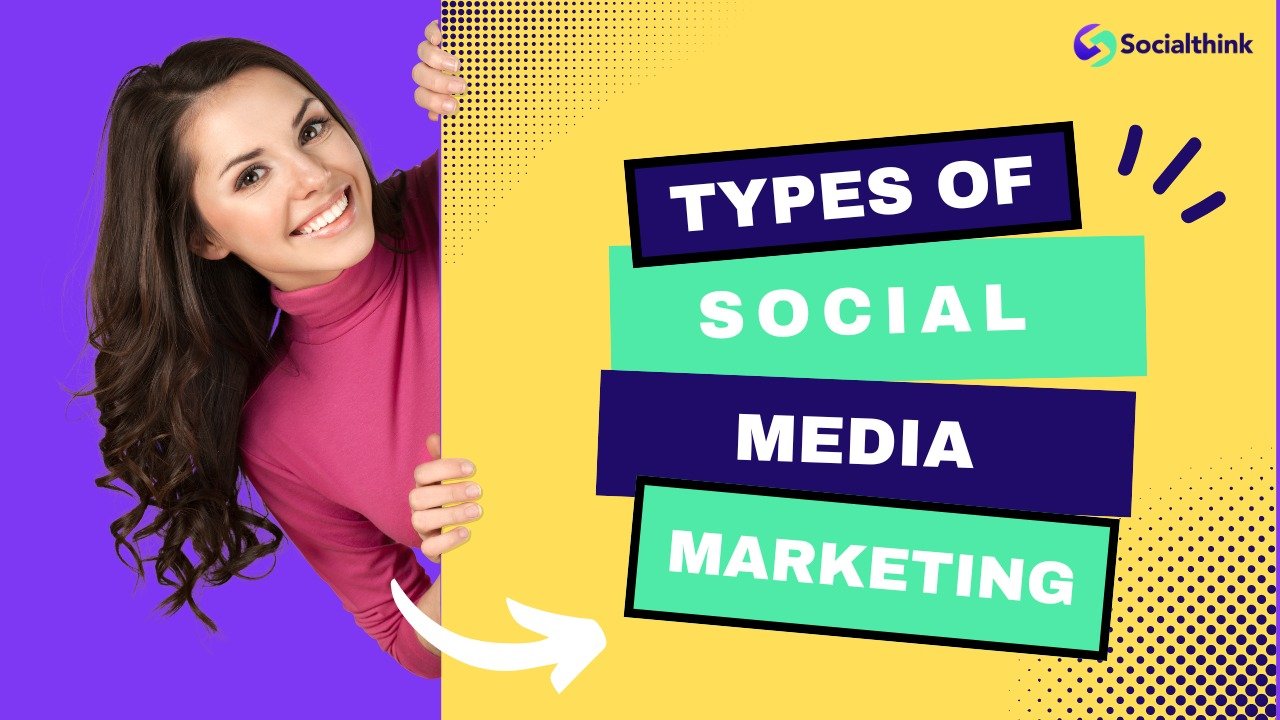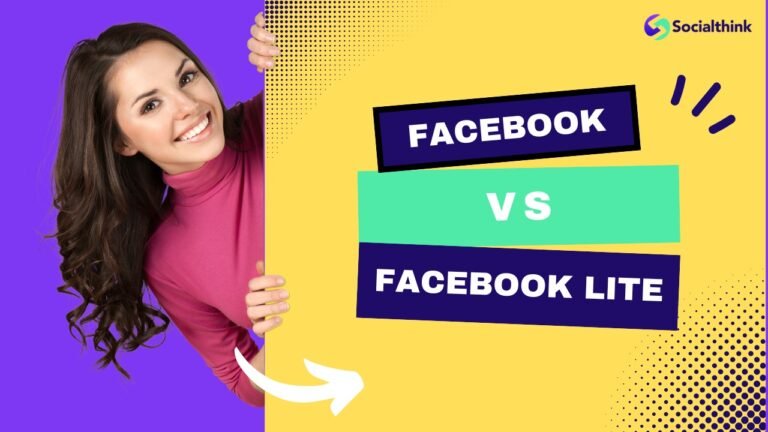Types of Social Media Marketing: A Comprehensive Guide for 2024
In today’s digital age, social media marketing has become an essential tool for businesses looking to connect with their target audience and drive growth.
At Social Think, we specialize in helping companies develop effective social media strategies and gain valuable insights from analytics to achieve their goals.
In this article, we’ll dive into the various types of social media marketing and share tips on how to leverage them for business success.
What is Social Media Marketing (SMM)?
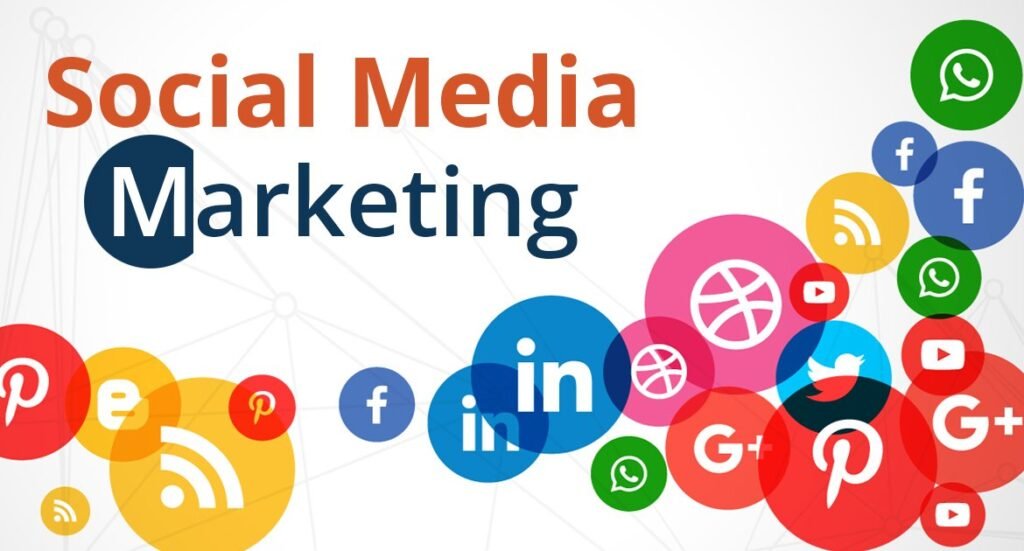
Social media marketing (SMM) is a type of digital marketing that involves the use of social media platforms to promote a product, service, or brand and engage with the target audience.
It encompasses creating and sharing high-quality content, listening to and engaging with followers, analyzing performance metrics, and running paid social media advertising campaigns on various social media platforms. The goal is to build brand awareness, drive website traffic from your social media presence, generate leads, and ultimately boost sales and revenue through the use of social networking and lead generation strategies.
Why is Social Media Marketing Important?

With over 4.6 billion active social media users worldwide, social media provides an unparalleled opportunity for businesses to reach and engage with their target audience. Whether through meeting recording to track key insights or through creative campaigns, effective social media marketing allows companies to:
- Increase brand visibility and awareness
- Build public relations and trust with current and potential customers
- Drive traffic to their website or physical locations
- Generate leads and sales
- Gain valuable insights into customer preferences and behaviors
- Stay competitive in their industry
Types of Social Media Marketing
There are several key types of social media marketing that businesses can leverage:
Content Marketing/ Content Creating

Content marketing involves creating and sharing valuable, relevant content to attract and retain a clearly defined audience. This can include blog posts, videos, infographics, ebooks, and more. The goal is to educate, entertain, or inspire the target audience while subtly promoting the brand.
Influencer Marketing

Influencer marketing involves partnering with individuals who have a strong following and influence over the target audience. These influencers can help promote the brand, products, or services to their engaged followers through sponsored posts, product reviews, or brand mentions.
Social Media Management

Social media management encompasses the day-to-day activities of running a brand’s social media accounts. This includes creating and scheduling posts, responding to comments and messages, monitoring mentions of the brand, and analyzing performance metrics to optimize the strategy.
Paid Media Marketing

Paid media marketing involves running paid advertisements on social media platforms to reach a larger or more targeted audience. This can include sponsored posts, display ads, video ads, and more. Paid media allows for precise targeting based on demographics, interests, behaviors, and more.
Advertising/ Sponsorship

Advertising and sponsorship on social media can take many forms, such as sponsored content, product placements, or event sponsorships. The goal is to align the brand with relevant content or experiences to increase visibility and favorability among the target audience.
How to Use Social Media to Grow Your Business?

- Use social media to create valuable content: Share blog posts, infographics, videos, and other content that educates, entertains, or inspires your target audience. This helps establish your brand as a thought leader and resource in your industry.
- Use social media to connect with potential and current customers: Engage with your followers by responding to comments, messages, and mentions. Show that there are real people behind your brand who care about their customers’ needs and feedback.
- Use social media to stay up-to-date with industry trends: Follow influencers, publications, and other relevant accounts in your industry to stay informed about the latest news, trends, and best practices. Use these insights to inform your own social media strategy.
- Use social media to generate leads and sales: Include calls-to-action in your social media posts and profile to drive traffic to your website or landing pages. Offer exclusive discounts or promotions to your social media followers to incentivize them to make a purchase.
Why is Social Media Marketing (SMM) So Powerful?

Social media marketing is a powerful tool for businesses due to its ability to:
- Connection: Social media allows brands to connect with their target audience on a more personal level. By engaging with followers and showing the human side of the brand, companies can build relationships and trust with potential and current customers.
- Interaction: Social media enables two-way communication between brands and their audience. Customers can easily provide feedback, ask questions, and share their experiences, giving valuable insights to the company.
- Customer Data: Social media platforms provide a wealth of data on user demographics, interests, behaviors, and more. This data can be used to create more targeted and effective marketing campaigns and inform overall business strategies.
How Social Media Marketing (SMM) Works?
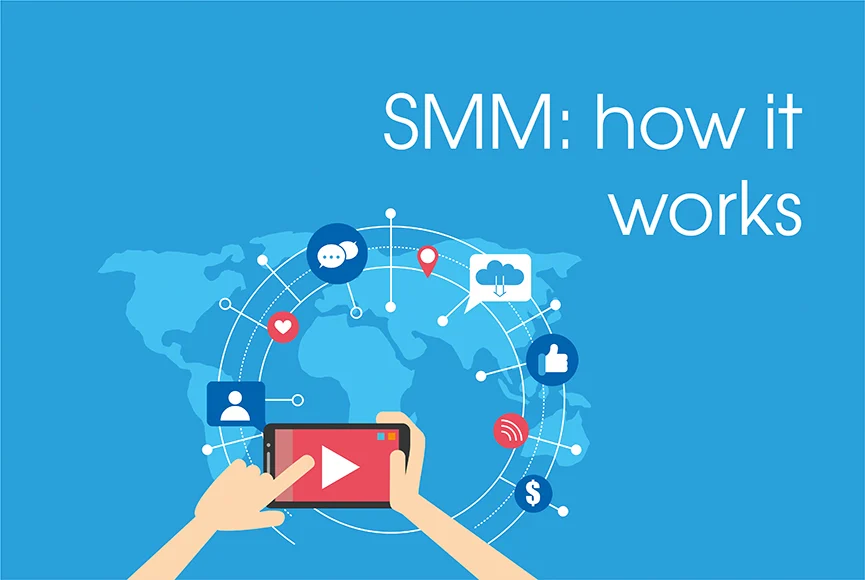
To run an effective social media marketing campaign, businesses should follow these key steps:
- SMM Action Plan: Develop a clear plan outlining your goals, target audience, content strategy, and metrics for success. This will guide your efforts and help you stay focused on what matters most.
- Customer Relationship Management (CRM): Use a CRM system to manage interactions with potential and current customers across various touchpoints, including social media. This helps ensure a seamless and personalized experience for each individual.
- Shareable Content: Create high-quality, valuable content that your target audience will want to share with their own networks. This can help expand your reach and attract new followers organically.
- Earned Media: Encourage satisfied customers to leave reviews, mentions, or user-generated content featuring your brand. This earned media serves as powerful social proof and can influence the purchasing decisions of others.
- Viral Marketing: Create compelling content or campaigns that have the potential to go viral and spread quickly across social media platforms. While virality can’t be guaranteed, creating emotionally resonant or highly entertaining content increases the chances.
- Customer Segmentation: Use the data gathered from social media and other sources to segment your audience based on demographics, interests, behaviors, and more. This allows for more personalized and effective marketing messages.
Advantages and Disadvantages of Social Media Marketing (SMM)
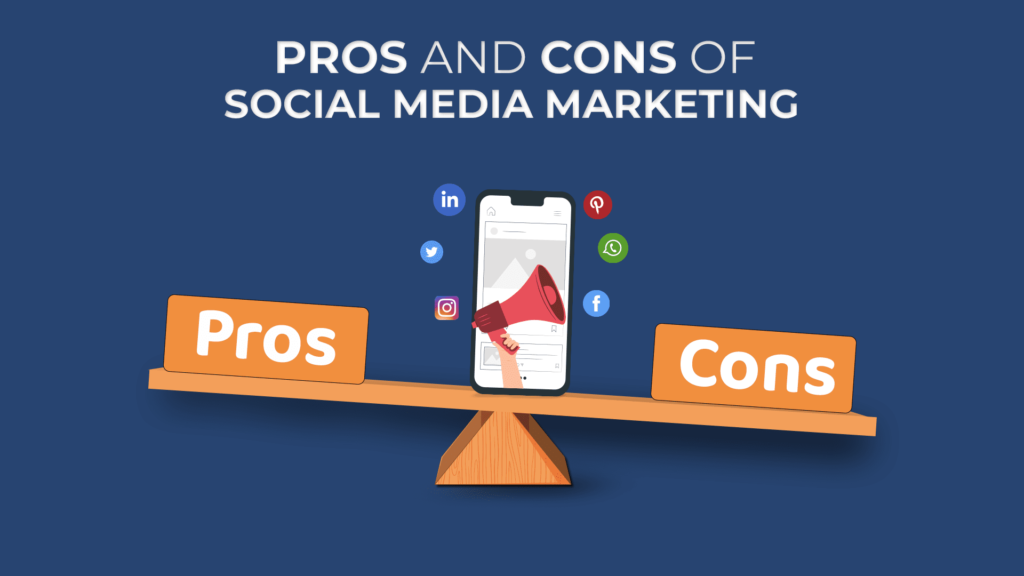
As with any marketing strategy, social media marketing has its pros and cons:
Advantages
- Broad reach: Social media allows businesses to connect with a large and diverse audience.
- Cost-effective: Many social media platforms offer free accounts and affordable advertising options.
- Targeted advertising: Social media platforms provide detailed targeting options to reach the right audience.
- Increased brand awareness: Consistent posting and engagement can help increase visibility and recognition for a brand.
- Improved customer insights: Social media provides valuable data on customer preferences, behaviors, and feedback.
Disadvantages
- Time-consuming: Managing multiple social media accounts and creating content can be time-intensive.
- Negative feedback: Unhappy customers can easily share their negative experiences on social media, potentially damaging a brand’s reputation.
- Constantly evolving: Social media platforms are constantly changing their algorithms and features, requiring businesses to adapt their strategies.
- Difficulty measuring ROI: Measuring the direct impact of social media on sales and revenue can be challenging.
What Are Examples of Effective Social Media Marketing?

Some successful social media marketing examples include:
- Wendy’s witty and sassy Twitter persona, which has helped the brand connect with younger audiences and go viral multiple times.
- Glossier’s user-generated content strategy on Instagram, which encourages customers to share photos of themselves using the products, serving as authentic social proof.
- Starbucks’ annual #RedCupContest on Instagram, which invites customers to share creative photos of their holiday cups for a chance to win a prize. This generates buzz and engagement around the brand during the crucial holiday season.
How to Create a Social Media Marketing Strategy?

Creating an effective social media marketing strategy involves the following steps:
- Step 1: Set Clear Goals: Identify what you want to achieve through social media, such as increased brand awareness, website traffic, leads, or sales. Make sure your goals are specific, measurable, achievable, relevant, and time-bound (SMART).
- Step 2: Research Your Buyer Personas and Audience: Understanding your audience’s details like age, hobbies, problems, and actions can guide content creation and platform selection.
- Step 3: Determine Which Social Platforms You’ll Market On: Focus on the platforms where your target audience is most active and that align with your brand’s visual style and content.
- Step 4: Establish Your Most Important Metrics and KPIs: Determine the metrics that will best indicate progress towards your goals, such as reach, engagement, click-through rate, or conversions. Set benchmarks and track your performance over time.
- Step 5: Get to Know Your Competition: Research what your competitors are doing on social media to identify opportunities for differentiation and areas for improvement in your own strategy.
- Step 6: Create Unique and Engaging Content: Ensure your content is valuable, relevant, and aligned with your brand voice.
- Step 7: Organize a Schedule For Your Posts: Use a scheduling tool to plan and automate your social media posts in advance.
How to Analyze Your Social Media Marketing Impact and Results?

To measure the success of your social media marketing efforts, you need to track and analyze key metrics:
Social Media Metrics
Some important social media metrics to track include:
- Reach: The number of people who see your content.
- Impressions: The number of times your content is displayed.
- Engagement: The number of interactions (likes, comments, shares) your content receives.
- Click-through rate: The percentage of people who click on a link in your post.
- Conversion rate: The percentage of people who take a desired action, such as making a purchase or filling out a form.
How to Measure Social Media Metrics?
Most social media platforms have built-in analytics tools that provide data on key metrics. You can also use third-party tools like Google Analytics to track website traffic and conversions from social media.
Social Media Marketing Tools
Some popular social media marketing tools include:
- Hootsuite: A platform for scheduling and managing social media posts across multiple accounts.
- Sprout Social: A tool for social media management, analytics, and customer engagement.
- BuzzSumo: A tool for analyzing the performance of content across social media platforms.
- Canva: A graphic design tool for creating visually appealing social media posts and graphics.
Social Media Marketing Platforms
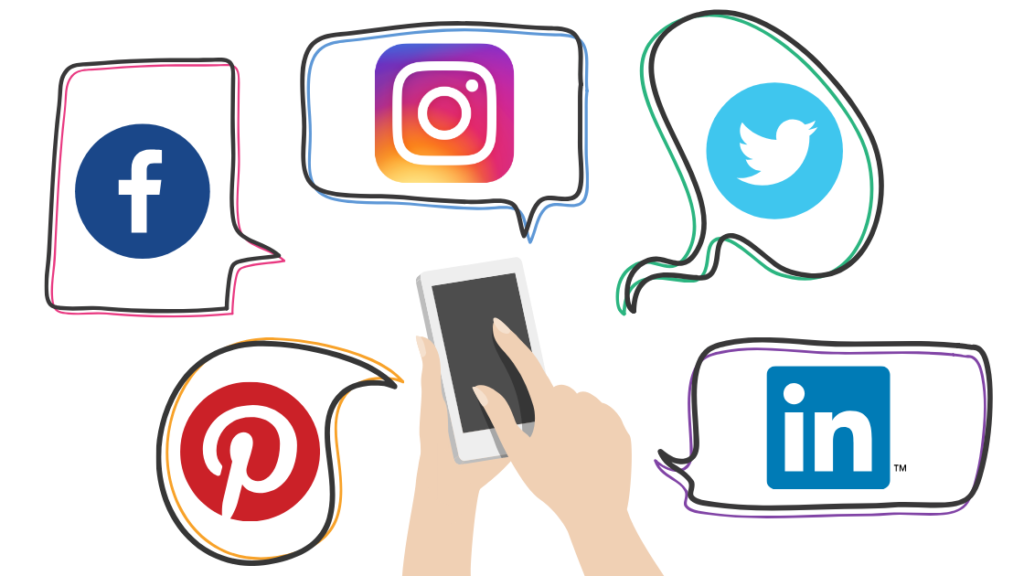
Here’s an overview of some of the most popular social media platforms for marketing:
- Facebook: With over 2.9 billion monthly active users, Facebook is the largest social media platform. It’s ideal for building brand awareness, generating leads, and creating a community around your business.
- Instagram: Instagram is a visual platform with over 1.4 billion monthly active users. It’s well-suited for businesses with visually appealing products or services, such as fashion, beauty, food, or travel.
- LinkedIn: LinkedIn is a professional networking platform with over 830 million members. It’s ideal for B2B companies looking to generate leads, establish thought leadership, and recruit talent.
- X (Formerly Twitter): X, formerly known as Twitter, is a microblogging platform with over 450 million monthly active users. It’s known for real-time updates, news, and customer service interactions.
- YouTube: YouTube is a video-sharing platform with over 2.5 billion monthly active users. It’s ideal for businesses looking to create educational, entertaining, or promotional video content.
- Snapchat: Snapchat is a multimedia messaging app popular among younger audiences, with over 750 million monthly active users. It’s known for its ephemeral content and AR filters.
- Pinterest: Pinterest is a visual discovery platform with over 450 million monthly active users. It’s well-suited for businesses in industries like home decor, fashion, beauty, and food.
- TikTok: TikTok is a short-form video platform with over 1 billion monthly active users. It’s popular among younger audiences and known for its viral dance and comedy content.
Social Media Marketing Tips

Here are some tips for effective social media marketing:
- Know your audience: Understand your target audience’s demographics, interests, and behaviors to create content that resonates with them.
- Be consistent: Maintain a consistent posting schedule and brand voice across all social media platforms.
- Engage with your followers: Respond to comments, messages, and mentions to build relationships and show that you value your customers’ feedback.
- Use visuals: Include eye-catching images, videos, and infographics to grab attention and increase engagement.
- Leverage hashtags: Use relevant hashtags to increase the discoverability of your content and join conversations around trending topics.
- Collaborate with influencers: Partner with influencers in your industry to expand your reach and gain credibility with their followers.
- Run contests and giveaways: Encourage engagement and attract new followers by running contests or giveaways on social media.
- Monitor and adjust: Regularly track your social media metrics and adjust your strategy based on what’s working and what’s not.
FAQ’s:
How Do I Know Which Social Media Channel to Market On?
Consider where your target audience is most active and which platforms align with your brand’s visual style and content. You can also look at what your competitors are doing and conduct surveys or focus groups to gather insights from your customers.
Which Social Media Channel Has The Most Users?
Facebook is currently the largest social media platform with over 2.9 billion monthly active users.
How Do I Choose The Right Social Media Platform For My Business?
Evaluate each platform based on your target audience, business goals, content style, and resources. Focus on the platforms that offer the most potential for reaching and engaging with your ideal customers.
How Do Paid Advertising and Sponsored Content Fit into Social Media Marketing?
Paid advertising allows you to reach a larger or more targeted audience beyond your organic followers. Sponsored content, such as influencer partnerships or branded content, can help increase brand awareness and credibility.
What Are The Latest Trends in Social Media Marketing?
Some current trends in social media marketing include the rise of short-form video content (such as TikTok and Instagram Reels), increased use of AR and VR, the growth of social commerce, and a focus on authenticity and transparency in brand communications.
Conclusion
Social media marketing is a powerful tool for businesses looking to connect with their target audience, build brand awareness, and drive sales. By understanding the different types of social media marketing and developing a strategic plan, companies can effectively leverage social media to achieve their goals.
At Social Think, we specialize in helping businesses create and execute effective social media strategies backed by data-driven insights. Our team of experts can guide you through the process of identifying your target audience, creating compelling content, and analyzing your results to continuously optimize your performance.
Ready to take your social media marketing to the next level? Contact Social Think today to learn more about how we can help you achieve your business goals through strategic social media marketing.

